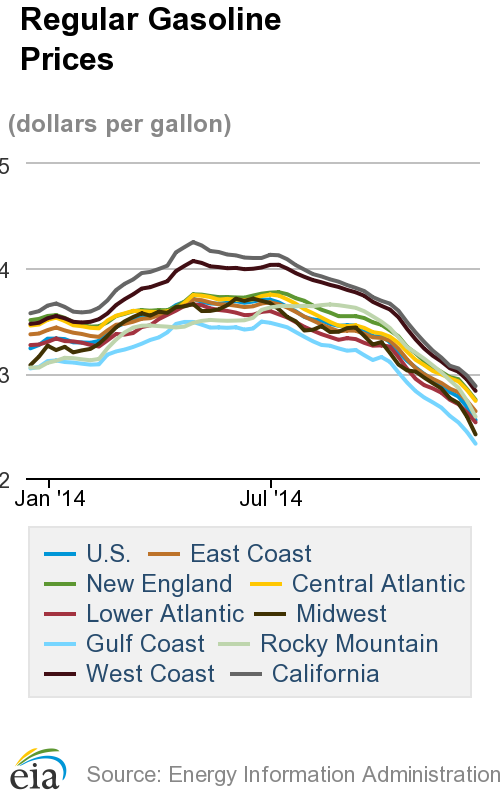U.S. Minister-Counselor for Commercial Affairs to Japan, His Excellency Andrew Wylegala, recently hosted a business roundtable at the Trade Development Alliance of Greater Seattle (TDA). Wylegala briefed TDA members on the upcoming bilateral U.S.-Japan FTA talks and gave a market overview of Japan and U.S.-Japan economic development potentials. Nawaf Alfaouri, Economic Development Specialist at Greenfield Advisors and active member at the TDA, also attended the Japanese business roundtable.
During his 20 years with the U.S. Commercial Service, Wylegala has assisted especially small and medium-sized U.S. firms with their trade and investment objectives in markets as diverse as Mexico and Germany. He received Commerce’s bronze medal for superior federal service three times, most recently for work in Baghdad, where he opened an office in Iraq’s Kurdish Region.

From left: U.S. Minister-Counselor for Commercial Affairs to Japan, His Excellency Andrew Wylegala with Nawaf Alfaouri, Economic Development Specialist with Greenfield Advisors.
Wylegala’s experience includes assignments to the U.S. Treasury, the Trade Representative, and the International Trade Commission. He worked on trade issues for U.S. Senator Lisa Murkowski (R-AK), and he was an LBJ Intern for the House Economic Stabilization Committee under Congressman LaFalce.
Before his time working in the government sector, Wylegala was a paralegal for a Washington D.C. law firm and researched ventures for a Japan/Korea business consultancy, as well as interning with a Japanese trading firm. He received a B.A. with honors from Cornell University and an M.A. in International Relations from Johns Hopkins University/S.A.I.S. (Bologna and D.C.). He assumed leadership of the Commercial Service’s Japan operations in August 2012.
U.S. – Japan Free Trade Agreement Speculations
Wylegala highlighted the possibility of a Free Trade Agreement (FTA) between the U.S. and Japan, partly due to the Trump Administration ending the Trans Pacific Partnership (TPP). The TPP was a 12-nation trade agreement that would have reduced tariffs and eased free trade between the U.S. and Eastern markets. The 12 countries involved have a collective population of about 800 million – almost double that of the European Union’s single market. The 12-nation would-be bloc is already responsible for 40 percent of world trade. The absence of the TPP has become the basis of discussions for a possible U.S.–Japan FTA. Wylegala informed the roundtable that Vice President Mike Pence would host bilateral talks in hopes of establishing this FTA with Japan, with a main focus on accessing Japan’s agricultural markets in mid-May 2017.
This isn’t the first time the possibility of a U.S.–Japan FTA came to light. Two decades ago, U.S. Ambassador to Japan Mike Mansfield raised the idea of an FTA between Japan and the United States that would formalize bilateral economic ties across a broad range of sectors. The idea never gained much traction though, falling victim to larger priorities in multilateral trade institutions and a lack of enthusiasm from domestic interests in both countries. Bilateral trade has proceeded apace without an FTA.
Interest in a Japan-U.S. FTA may soon be rekindled as tensions rise between Japan, China, and North Korea.An FTA would bolster U.S. strategic, economic, and tactical alliances in the region. With the possible completion this year of a U.S.-South Korea FTA, Tokyo may feel pressure to consider a corresponding trade deal with the United States to avoid losing out to Seoul. Launching a Japan-U.S. FTA, however, would necessitate a radical shift in Japanese trade policy, in particular by requiring the liberalization of the staunchly protected agriculture sector. While the onus for reducing the obstacles to an FTA may lie largely on Japan, both Tokyo and Washington should start to review whether or not such an agreement makes sense for their long-term interests.
Finally, Wylegala briefed the roundtable on the speculation of the next U.S. Ambassador to Japan, Bill Hagerty.
International Trade Administration Market Overview of Japan
Japan, the only Asian member of the G-7, is an economic and demographic trend-setter among the world’s most advanced countries. It is a technological and manufacturing powerhouse that plays a leading role in the global economy and supply chains. Japan’s vast middle class demands a variety of consumer goods and services that drives a consumer economy, which leads the national economy. Japan also holds the second-largest total amount of foreign direct investment (FDI) in the United States, with a cumulative FDI stock of almost $400 billion. Also notable, Japan has been the single largest source of foreign direct investment into the U.S. market over the past several years, with an inflow of over $30 billion in 2015. As a result, Japan sees dozens of visits annually by senior U.S. state and city officials. While the reasons U.S. firms engage with Japan are diverse, the strategic and tactical importance of the Japanese market is critical for their business in Japan, in the United States, and in third-country markets as well. (International Trade Administration)
Top 5 Reasons Why U.S. Companies Should Consider Exporting to Japan
- Japan is the third-largest economy in the world, after the United States and China. Japan is the fourth-largest importer of U.S. products, after Canada, Mexico and China. Japan is a key player in the global economy and international trade system with well-established rule of law and strong protections for intellectual and real property rights. Japan will also host the 2020 Olympic and Paralympic Games, boosting the economy in the run up to the Games, with the potential for a significant beneficial legacy, particularly in “soft” infrastructure.2. Japan’s strategic alliance and deep economic integration with the United States provides opportunities in cutting-edge sectors including space, defense, and security. Japan is a leading importer of U.S. aerospace and defense equipment, and increasingly, an integrated co-developer. Fast-growing markets include advanced manufacturing, healthcare, cyber security solutions, and e-commerce.3. Japan has a large middle class and a broad-based, highly developed consumer economy that offers great potential for consumer products and services and B2C sales. Japan has a high per-capita income, with a GDP per capita of over $38,000 (PPP, CIA Factbook, 2015), with significant disposable and household consumption representing about 60% of GDP (CIA Factbook, 2015). Japan’s middle class consumption is ranked second behind the United States, according to the Brookings Institution. For example:
- Japan is the second-largest source of overseas travel and tourism to the United States, just behind the United Kingdom with 3.58 million visitors in 2014 (source: Commerce, ITA).
- Japan is the eighth-largest source of international students to the United States: 19,064 students during the 2014-15 school year (source: Open Doors Report).
- Japan is highly dependent upon imported natural resources. Japan is the world’s largest net buyer of food products in the world, and the United States is the leading supplier of its agricultural imports. Total U.S. food, agricultural, and fishery exports to Japan were over $13.9 billion in 2014, and U.S. manufactured food exports to Japan were $6.5 billion in 2014. The United States is also well positioned to export agricultural capital equipment and technologies to Japan that are needed as Japan increases its exports of high-value added-food products. Japan is also the world’s largest liquefied natural gas importer, second-largest coal importer, and third-largest net importer of crude oil and oil products. In addition to welcoming international collaboration on renewable and distributed energy, Japanese firms have also signed multi-decade purchase agreements to import liquefied natural gas from the United States.5. The U.S. Commercial Service Japan has upgraded its tools available to assist U.S. companies, to include a SelectUSA program to attract U.S. foreign direct investment, a Digital Attaché program to provide greater assistance to Digital Economy companies, and more robust staffing in Western Japan.Economic Policy and International Trade
Prime Minister Abe is implementing economic policies to revitalize the economy. These new economic policies are known collectively as “Abenomics” — a three-pronged strategy that combines expansive fiscal policy, monetary easing, and structural reform. While the success of this strategy in re-igniting long term growth in Japan is uncertain, it has drawn considerable attention from U.S. businesses. Reforms to Japan’s agricultural landholding system and corporate governance disciplines aimed at increasing transparency and unlocking shareholder value have attracted particular attention, as has liberalization of the electrical sector.

U.S. Minister-Counselor for Commercial Affairs to Japan, His Excellency Andrew Wylegala hosting the Japan Business Roundtable at the TDA.
Demographics
Japan has a declining population and a rapidly aging society. Japan’s population is projected by some researchers to shrink by as much as one-third by 2060, from 127 million to 87 million; and the share of the population over 65 years old may rise from 25 percent today to 40 percenty by 2060. The Japanese government, healthcare industry, and business community are actively engaged in both seeking to ameliorate the decline in population, as well as to adapt to its impacts, beginning with a check on potential macroeconomic growth. Japan’s aging population, likewise, is often seen as a drag on the economy but it also presents business opportunities in sectors, including:
- Medical devices and equipment
- Pharmaceuticals
- Healthcare facilities and infrastructure, including in-home care
- Biotechnology
- Healthcare information technology
- Safety
- Robotics
- Leisure and travel
- Educational services
Recent Developments
Japan continues to implement fiscal and monetary policies to stimulate economic growth and development. Japan’s large government debt, which totals over 250% of GDP, continues to be a long-term challenge confronting the economy.
While Japan has made significant steps toward economic healing following the tragic combined earthquake, tsunami, and nuclear incident of March 2011, lasting changes on various levels remain noticeable, including idled nuclear power plants, dislocated communities, and a lack of long-term confidence in wage and purchasing power growth.
Key Facts about Japan
- National Capital: Tokyo
- Population: 126.8 million (February 2016 national data, #11 in the world)
- Land Area: 364,485 sq. km, slightly smaller than California (CIA Factbook)
- GDP (official exchange rate): $4.2 trillion (2015, IMF, #3 in the world)
- Real GDP Growth: 0.6% (2015, CIA Factbook)
- GDP per Capita (Purchasing Power Parity): $38,200 (2015, CIA Factbook)
- Household Consumption Percent of GDP: 59.6% (2015, CIA Factbook)
- Unemployment Rate: 3.7% (2015, IMF)
- Industries: among world’s largest and most technologically advanced producers of motor vehicles, electronic equipment, machine tools, steel and nonferrous metals, ships, chemicals, textiles, processed foods (CIA Factbook)
- Exports: $624 billion f.o.b. (2015, CIA Factbook)
- Export Trade Partners: US 20.1%, China 17.5%, South Korea 7%, Taiwan 5.9%, Hong Kong 5.6%, Thailand 4.5% (2015, CIA Factbook)
- Imports: $625.4 billion (2015, CIA Factbook)
- Top Import Categories: Petroleum, liquid natural gas, clothing, semiconductors, coal (2015, CIA Factbook)
- Import Trade Partners: China 24.8%, US 10.3%, Australia 5.4%, South Korea 4.1%, Saudi Arabia 3.9% (2015, CIA Factbook)
- Trade Balance: – $1.4 billion (2015, CIA Factbook)
- Services Balance: – $31.9 billion (2015, WTO) U.S. Trade in Goods with Japan (U.S. Census Bureau)
- U.S. Exports to Japan: $62.4 billion (2015, CIA Factbook)
- U.S. Share of Japan Imports: 10.3% (2015, CIA Factbook)
- U.S. Imports from Japan: $131.1 billion (2015, CIA Factbook)
- U.S. Trade Balance with Japan: -$68.7 billion (2015, CIA Factbook)
Resources:
U.S. Department of Commerce, Select USA
U.S. Department of Commerce, Travel and Tourism Office
Trade Stats Express, U.S. Dept. of Commerce
U.S. Census Bureau, Foreign Trade Statistics
U.S. Relations with Japan Fact Sheet, State Department
Japan Country Study, Library of Congress
World Economic Outlook Database, April 2015, The International Monetary Fund
2014 Market Profile: Japan, ITA
2015 Country Profiles, Economist Intelligence Unit
February 1, 2016 Provisional Population Estimates, Statistics Japan






Recent Comments